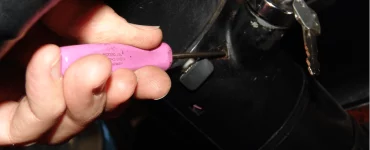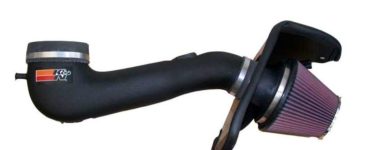How to Easily Remove Ignition Lock Cylinder on Ford F150
The ignition lock cylinder is an essential component of a Ford F150’s ignition system. It is responsible for starting the engine and locking the steering wheel. Over time, the lock cylinder may become damaged, making it difficult or impossible to start the vehicle. In this article, we will provide step-by-step instructions on how to remove the ignition lock cylinder from a Ford F150.
Before attempting to remove the ignition lock cylinder, it is important to understand how it works and the tools required for the job. Additionally, safety precautions must be taken to prevent injury. This article will cover all of these topics in detail to ensure that the process is completed safely and efficiently.
Key Takeaways
- Understanding the ignition lock cylinder and the tools required is essential before attempting to remove it from a Ford F150.
- Safety precautions must be taken to prevent injury during the removal process.
- Proper handling of the steering column and tumblers is crucial for a successful removal and replacement of the ignition lock cylinder.
Understanding Ignition Lock Cylind
The ignition lock cylinder is a critical component in starting a vehicle, including the Ford F150. It is a small mechanism that is responsible for locking and unlocking the steering wheel and starting the engine. The ignition lock cylinder is located on the steering column, and it is connected to the ignition switch. When the key is inserted into the ignition lock cylinder and turned, it sends a signal to the ignition switch, which then sends power to the starter motor, allowing the engine to start.
In Ford F150 trucks, the ignition lock cylinder is designed to work with a specific key. This means that the key must be cut and programmed to match the ignition lock cylinder before it can be used to start the engine. The ignition lock cylinder is also designed to prevent theft by requiring a specific key to start the engine.
Over time, the ignition lock cylinder can become worn or damaged, making it difficult or impossible to turn the key. When this happens, it may be necessary to replace the ignition lock cylinder to ensure that the vehicle can be started reliably.
It is important to note that replacing the ignition lock cylinder on a Ford F150 can be a complex and time-consuming process. It may require special tools and knowledge of the vehicle’s electrical system. It is recommended to seek the assistance of a qualified mechanic or locksmith to ensure that the job is done correctly and safely.
Tools Required
Removing the ignition lock cylinder on a Ford F150 requires a few specific tools. Here are the tools that will be needed:
- Screwdriver
- Power drill
- Drill bit
- Hammer
The screwdriver will be used to remove any screws or bolts that are holding the ignition lock cylinder in place. The power drill and drill bit will be needed to drill out the retaining pin that holds the cylinder in place. Finally, the hammer will be used to tap the cylinder out of the steering column once the retaining pin has been removed.
It is important to have the correct tools on hand before attempting to remove the ignition lock cylinder. Using the wrong tools can damage the cylinder or the steering column, leading to costly repairs.
If you do not have these tools, they can be purchased at most hardware or auto parts stores. It is also possible to rent or borrow these tools from a friend or mechanic if you do not want to purchase them yourself.
Overall, having the right tools is essential for a successful ignition lock cylinder removal. With the proper tools and a little bit of know-how, anyone can remove an ignition lock cylinder from a Ford F150.
Safety Precautions
Removing the ignition lock cylinder from a Ford F150 can be a challenging task, but it can be done safely with the right tools and precautions. Before beginning the process, it is important to take the following safety precautions:
- Disconnect the Battery: Before starting any work on the ignition lock cylinder, it is important to disconnect the battery. This will prevent any electrical shocks or accidents from occurring. To do this, locate the battery and remove the negative cable terminal.
- Wear Protective Gear: It is important to wear protective gear such as gloves and safety glasses when working on the ignition lock cylinder. This will protect your hands and eyes from any debris or sharp objects that may be involved in the process.
- Use Proper Tools: Make sure you have the right tools for the job. Using improper tools can lead to damage to the ignition lock cylinder or other parts of the vehicle. Some of the tools you may need include a screwdriver, pliers, and a socket wrench.
- Work in a Well-Lit Area: Make sure you are working in a well-lit area. This will help you see what you are doing and prevent any accidents from occurring.
By following these safety precautions, you can ensure that the process of removing the ignition lock cylinder from your Ford F150 is done safely and efficiently. Remember to always take your time and be patient when working on your vehicle.
Removing the Ignition Lock Cylinder
Removing the ignition lock cylinder from a Ford F150 is a straightforward process that can be completed with basic tools and some patience. Here’s how to do it:
- Remove the steering column cover: The first step is to remove the steering column cover. This can be done by removing the screws that hold it in place. Once the screws are removed, gently pull the cover off.
- Locate the small hole: Once the steering column cover is removed, you’ll need to locate the small hole on the bottom of the ignition lock cylinder. This hole is used to release the lock cylinder from the steering column.
- Insert a pin: Insert a pin or a small screwdriver into the small hole on the bottom of the ignition lock cylinder. You’ll need to push the pin in until you feel resistance. This resistance is the lock cylinder releasing from the steering column.
- Turn the key to the on position: Once you feel the resistance, turn the key to the on position. This will allow the lock cylinder to be removed from the steering column.
- Remove the lock cylinder: With the key in the on position, gently pull the lock cylinder out of the steering column. Be careful not to damage the wiring or any other components in the steering column.
- Replace the lock cylinder: To replace the lock cylinder, simply reverse the steps. Insert the lock cylinder back into the steering column, turn the key to the off position, and then remove the pin from the small hole.
In conclusion, removing the ignition lock cylinder from a Ford F150 is a simple process that can be completed with basic tools and some patience. By following these steps, you can remove and replace the lock cylinder in no time at all.
Handling the Steering Column
When removing the ignition lock cylinder on a Ford F150, it’s important to properly handle the steering column to avoid any damage. The steering column is an essential component of the vehicle’s steering system, and it’s important to handle it with care to prevent any issues.
First, it’s important to ensure that the steering wheel is in the correct position before starting the removal process. This will help to prevent any damage to the steering column or steering wheel. The steering wheel should be in the “straight ahead” position, which means that the wheels are pointing straight ahead and the steering wheel is centered.
Next, the technician should locate the steering column cover and remove it carefully. This will provide access to the steering column and the ignition lock cylinder. It’s important to take care when removing the cover to prevent any damage to the steering column or other components.
Once the cover is removed, the technician should locate the ignition lock cylinder and remove it according to the manufacturer’s instructions. It’s important to handle the ignition lock cylinder with care to prevent any damage to the steering column or other components.
Finally, the technician should reassemble the steering column and ensure that everything is in its proper place. This will help to prevent any issues with the vehicle’s steering system and ensure that the ignition lock cylinder is functioning properly.
In summary, handling the steering column carefully is essential when removing the ignition lock cylinder on a Ford F150. By following the manufacturer’s instructions and taking care when handling the steering column, technicians can ensure that the vehicle’s steering system remains in good condition.
Dealing with the Tumblers
When it comes to removing the ignition lock cylinder on a Ford F150, dealing with the tumblers is an important step. Tumblers are small metal pins that are located inside the cylinder and work with the key to turn the ignition. Over time, these tumblers can become worn or damaged, causing the ignition to fail.
To remove the ignition lock cylinder, the tumblers must first be dealt with. This involves using a pick to push the tumblers up and out of the way so that the cylinder can be removed. It is important to be gentle when dealing with the tumblers, as they can easily become damaged if too much force is applied.
One technique for dealing with the tumblers is to use a pick to lift each tumbler individually. Start by inserting the pick into the keyhole and gently lifting the first tumbler. Once the first tumbler has been lifted, hold it in place with the pick and move on to the next tumbler. Repeat this process until all of the tumblers have been lifted.
Another technique is to use a detent ball to hold the tumblers up. A detent ball is a small metal ball that can be inserted into the keyhole to hold the tumblers in place. Once the detent ball is in place, the tumblers can be easily removed without the need for a pick.
It is important to note that not all ignition lock cylinders have the same number of tumblers. Some cylinders may have as few as five tumblers, while others may have as many as ten. It is important to know the number of tumblers in your specific ignition lock cylinder before attempting to remove it.
In summary, dealing with the tumblers is an important step in removing the ignition lock cylinder on a Ford F150. Using a pick or detent ball can make the process easier, but it is important to be gentle and careful to avoid damaging the tumblers.
Replacing the Ignition Lock Cylinder
Replacing the ignition lock cylinder in a Ford F150 can be a straightforward process if you have the right tools and follow the proper steps. This section will guide you through the process of replacing the ignition lock cylinder.
Before starting the replacement process, make sure to have a replacement lock cylinder that fits your Ford F150 model. It is also recommended to have a set of mounting screws and a screwdriver to remove the old lock cylinder.
To replace the ignition lock cylinder, follow these steps:
- Disconnect the battery: Before starting any work, disconnect the battery to avoid any electrical hazards.
- Remove the steering column cover: Use a screwdriver to remove the screws that hold the steering column cover in place. Once removed, gently pry the cover off.
- Remove the old lock cylinder: Locate the old lock cylinder and remove it by unscrewing the mounting screws. Once removed, gently pull the cylinder out.
- Install the new lock cylinder: Insert the new lock cylinder into the ignition switch and secure it in place with the mounting screws.
- Reattach the steering column cover: Put the steering column cover back in place and secure it with the screws.
- Reconnect the battery: Reconnect the battery and test the new lock cylinder to ensure it is functioning correctly.
In conclusion, replacing the ignition lock cylinder in a Ford F150 is a simple process that can be done with the right tools and following the proper steps. By following the steps outlined above, you can replace the lock cylinder and ensure your vehicle’s security.
Reconnecting Electrical Connections
Once the ignition lock cylinder has been removed, the next step is to reconnect the electrical connections. This is a crucial step that ensures the proper functioning of the ignition switch and the accessory circuits.
First, inspect the electrical connections for any damage or corrosion. If any of the connections are damaged or corroded, they should be replaced before reconnecting them.
Next, carefully reconnect the electrical connections to their respective terminals. It is important to ensure that each connection is properly seated and secured.
Once all the electrical connections have been reconnected, test the ignition switch and accessory circuits to ensure that they are functioning properly.
If any issues are detected, double-check the electrical connections to ensure that they are properly seated and secured. If the issue persists, it may be necessary to replace the ignition switch or accessory circuits.
In summary, reconnecting the electrical connections is a crucial step in the process of removing the ignition lock cylinder. It requires careful attention to detail and proper installation to ensure the proper functioning of the ignition switch and accessory circuits.

Final Checks and Testing
After successfully removing the ignition lock cylinder, it is important to perform some final checks and testing to ensure that everything is working properly. This section will cover the steps to follow for these final checks and testing.
First, the technician should make sure that the truck mods or any other modifications that were made to the vehicle are still functioning properly. If any issues are found, they should be addressed before proceeding further.
Next, the technician should use a scanner to check for any error codes related to the actuator or the PATS system. If any error codes are found, they should be addressed before proceeding further.
Once the scanner check is complete, the technician should reassemble the ignition lock cylinder and test it to ensure that it is working properly. They should turn the key to the “on” position and make sure that the dashboard lights come on. Then, they should turn the key to the “start” position and make sure that the engine starts.
If the engine does not start, the technician should double-check that the ignition lock cylinder was installed correctly and that all the connections are secure. They may also need to check the PATS system and actuator again to ensure that they are functioning properly.
Finally, the technician should test the key to make sure that it can be inserted and removed smoothly from the ignition lock cylinder. If any issues are found, they should be addressed before returning the vehicle to the customer.
Overall, following these final checks and testing steps will ensure that the ignition lock cylinder replacement was successful and that the vehicle is safe to drive.
When to Call a Locksmith
Removing an ignition lock cylinder in a Ford F150 can be a challenging task. While it is possible to do it yourself, there are some situations where it may be best to call a locksmith for help.
If you have never attempted to remove an ignition lock cylinder before, it can be a daunting task. It requires some specialized tools and knowledge, and if you don’t know what you’re doing, you can easily damage your vehicle. In this case, it’s best to call a professional locksmith who has experience working with Ford ignition lock cylinders.
Another situation where you may want to call a locksmith is if you have attempted to remove the ignition lock cylinder yourself and have run into problems. For example, if you have stripped a screw or damaged the cylinder, it may be best to call a locksmith to avoid causing further damage.
If you are not confident in your ability to replace the ignition lock cylinder, it is also a good idea to call a locksmith. While it is possible to purchase a replacement cylinder and attempt to install it yourself, it can be a complicated process that requires some knowledge of your vehicle’s electrical system. A locksmith will have the necessary tools and experience to ensure that the new cylinder is installed correctly.
Finally, if you are attempting to bypass the ignition lock cylinder altogether, it is best to call a locksmith. Bypassing the cylinder can be dangerous and can cause damage to your vehicle’s electrical system. A locksmith will be able to provide you with a safe and effective solution to bypass the cylinder if needed.
In summary, if you are not confident in your ability to remove or replace the ignition lock cylinder in your Ford F150, or if you have run into problems during the process, it is best to call a professional locksmith for help. They will have the necessary tools and experience to ensure that the job is done correctly and safely.




